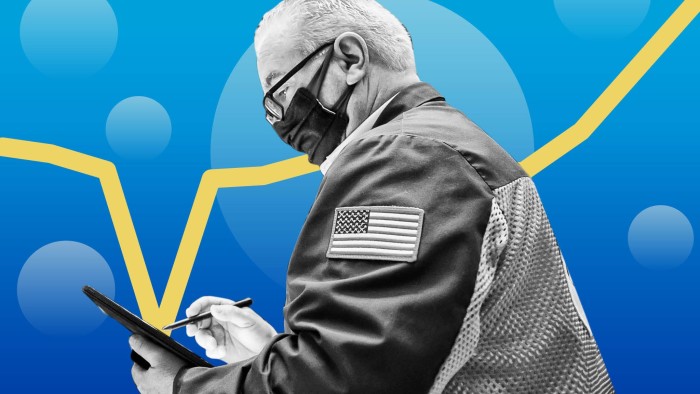Retail investors rush to find the next stock market unicorn

Roula Khalaf, Editor of the FT, selects her favourite stories in this weekly newsletter.
This article is part of the FT’s Runaway Markets series.
The writer is president of Bianco Research
For a sign of the current mood of stock markets and retail investors, one index put together by Goldman Sachs provides a telling insight.
The investment bank has compiled an index of technology sector shares that do not produce profits, traditionally a main driver of stock market valuations. Since mid-March, the index is up nearly 400 per cent.
Why have such stocks gone up in value so quickly? One argument is many of these companies are high margin, high-growth businesses that reinvest profits back into the business to achieve scale. They are less concerned with earnings and more concerned with growing at a rapid pace.
This could very well be valid. But this was not this the case from September 2014, when the Goldman Sachs Non-Profitable Tech Stock Index was launched, until March 2020. The companies in the index in essence traded sideways during these years, even as the broader market advanced. If the markets viewed them as having high growth potential, should not they have been outperforming the same way even a year or two ago? What changed?
We would argue this index’s unusual pattern is the result of an important shift in investor preferences that took hold last spring. Many individual investors long ago abandoned actively managed vehicles such as open-ended mutual funds. Some are also beginning to sour on passively managed vehicles including exchange traded funds tied to indices. Instead, retail investors are chasing individual names.

There is no one definitive measure to show this shift, but the signs are unmistakable. Trading in individual stock options has been booming to new records, according to data from the Options Clearing Corporation. This has been led by purchases of options to buy stocks in lots of 10 contracts or fewer. Nearly 15 per cent of all trades are for one contract.
Penny stocks have recently caught the fancy of investors. In December 2020, they traded 1tn shares, according to data firm SentimenTrader. That easily exceeded the previous monthly record.
Such trading does not happen if the public’s money is caught in a battle between a professional money manager in Boston or a passively managed ETF. Neither of these two groups traffic in these areas.
Instead, three things have dramatically changed the public’s investor preferences. First was the cutting of brokerage commissions to zero in 2019. Then, widespread adoption of fractional purchases added further fuel to the fire. Finally, the massive increase in savings from government assistance payments led to increased trading. This started with the Cares Act last March and continued through the $900bn stimulus package passed last month. The Biden administration is promising more of the same.
Runaway Markets

In a series of articles, the FT examines the exuberant start to 2021 across global financial markets
Armed with new money in their bank account and a fear about the economy that kept them from spending, this retail crowd turned to trading. Their investing is not focused on the proverbial “safe” names that would be found in the S&P 500 index. If it were, they would continue to buy passive ETFs and call it a day. Instead, they are looking for the next “unicorn”.
A Silicon Valley investor once asked, “What do you call a person who bought 10 speculative tech stocks, nine of which went to zero and the tenth that was a unicorn?” The answer is, “fabulously wealthy.”
With this dotcom boom-like mindset, the search for the next has led individual investors to the tech names that have yet to make money. They are piling into the fuel cell manufacturer Plug Power (12 per cent of the index), which has soared from $7 to $70 the last six months. Or they are dabbling in the Chinese electric vehicle maker Nio (8 per cent of the index) that has rallied from $10 to $60 since last summer.
What ends this mentality? Our guess is a return to normal. Once vaccines take hold, infection counts go down and the economy reopens, investors will look to improve their standard of living. Whether this takes the form of a new car or remodelling a kitchen, less money will be spent chasing unicorns.
The economist Herb Stein once quipped: “If something cannot go on forever, it will stop”. At some point the prospect for profits must translate into actual profits. So far, this new retail crowd’s resolve has yet to be tested with any serious pullback. An investment objective of owning companies that are not making money will fail in the long run. Until this reality slaps everyone in the face, traders will continue to pile into these high-flyers on the hopes of future profitability.
This article is part of the FT’s Runaway Markets series.

Comments